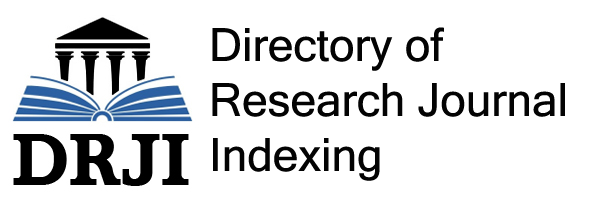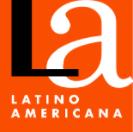La Natural gas politics and the limits to Guarani autonomy in Bolivia
Reflections on the age of Evo Morales
Keywords:
natural gas, oil, extractivism, guarani, BoliviaAbstract
Based on the case of Guarani territories and the expansion of the natural gas industry in southeastern Bolivia, this article offers reflections on the contradictions between the extractivist model for progressive redistribution and the discourse and potentiality of decolonization. On one hand, the government of now-exiled Evo Morales dedicated a significant portion of gas royalties to social redistribution. But, on the other hand, the reproduction of the gas economy entailed other processes and relations that deeply contradicted the discourse of decolonization. The government spoke of decolonizing the State, internally as well as in its relations with external powers. Nonetheless, dependence on the gas industry and the relation between it and foreign capital undermined both efforts. The possibilities for stopping the long trajectory of colonial erasure of indigeneity are limited by the dynamics of gas extraction, which does not decolonize, but rather reproduces colonial forms of reducing bodies and territories on its expansive frontiers.References
ABI (2013). “Presidente Morales entrega 1.600 instalaciones de gas domicilia-rio en el Distrito 3 de Oruro”, Agencia Boliviana de Información, 7 de febrero, documento electrónico: http://www3.abi.bo, acceso 3 de junio de 2013.
AN/YPFB (2013). “YPFB propone Bs14 millones de inversión social a la APGYaku Igua”,AN/YPFB, 17 de abril.
Anthias, Penélope (2018). The Limits of Decolonization: Indigeneity, Territoriality and Hydrocarbon Politics in the Bolivian Chaco. Ithaca, Cornell University Press.
Bebbington, Andrew y Bebbington, Denise (2010). “Extraction, territory and inequalities: gas in the Bolivian Chaco”, Canadian Journal of Development Studies, N° 30, Vol. 1-2, pp. 259-280.
Bridge, Gavin (2013). “Territory, now in 3-D!”, Political Geography, N° 34, pp. 55-57.
Catellino, Jessica (2008). High Stakes: Florida Seminole Gaming and Sovereignty. Durham, Duke University Press.
Clavero, Bartolomé (2011). En la despedida del Asesor Ruggie: Naciones Unidas, Empresas Extractivas, Pueblos Indígenas, documento electrónico: http://www.alainet.org/es/active/49000, acceso 20 de mayo de 2015.
El Deber (2013). “Toman separadora Gran Chaco”, El Deber (Santa Cruz), 3 de abril.
Elden, Stuart (2013). “Secure the volume: Vertical geopolitics and the depth of power”, Political Geography, Vol. 34, pp. 35-51.
Estado Plurinacional de Bolivia (2015). Decreto Supremo 2298. 18 de marzo, documento electrónico: http://www.lexivox.org/norms/BO-DS-N2298.xhtml, acceso 19 de mayo de 2015.
Fabricant, Nicole y Gustafson, Bret (2015). “Moving Beyond the Extractivism Debate: Imagining New Social Economies”, NACLA, N° 42, Vol. 4, pp. 40-45.
Farthing, Linda y Kohl, Benjamin (2014). Evo’s Bolivia: Continuity and Change. Austin, University of Texas Press.
Garcés, Fernando (2011). “The Domestication of Indigenous Autonomies in Bolivia: From the Pact of Unity to the New Constitution”, en Fabricant, Nicole y Gustafson, Bret (eds.): Remapping Bolivia: Resources, Territory, and Indigeneity in a Plurinational State. Santa Fe, SAR Press, pp. 46-67.Gilbert, Jérémie y Doyle, Cathal (2011). “A New Dawn over the Land: Shedding Light on Collective Ownership and Consent”, en Xanthaki, Alexandra y Allen, Steve (eds.): Reflections on the UN Declaration on the Rights of Indigenous Peoples. Oxford, Hart. pp. 289-328.
Gustafson, Bret (2009a). New Languages of the State: Indigenous Resurgence and the Politics of Knowledge in Bolivia. Durham, Duke University Press.
––– (2009b). “Manipulating Cartographies: Plurinationalism, Autonomy and Indigenous Resurgence in Bolivia”, Anthropology Quarterly, N° 82, Vol. 4, pp. 985-1016.
––– (2011). “Flashpoints of Sovereignty: Territorial Conflict and Natural Gas in Bolivia”, en Behrends, Andrea; Reyna, Stephen P. y Schlee, Gunther (eds.): Crude Domination: An Anthropology of Oil, New York, Berghahn. pp. 220-240.
––– (2017). “Oppressed No More? Indigenous Language Regimentation in Plurinational Bolivia”, International Journal of the Sociology of Language,N° 246, pp. 31-57.
––– (2020). Bolivia in the Age of Gas. Durham, Duke University Press.
Mandepora, Marcia (2011). “Bolivia’s Indigenous Universities”, ReVista, documento electrónico: http://revista.drclas.harvard.edu/book/bolivias-indigenous-universities, acceso 15 de mayo de 2015.
McNeish, John Andrew (2013). “Extraction, Protest, and Indigeneity in Bolivia: The TIPNIS Effect”, Latin American and Caribbean Ethnic Studies, N° 8, Vol. 2, pp. 221-242.
Organización de las Naciones Unidas (2007). Declaración de los Derechos de los Pueblos Indígenas, documento electrónico: http://www.un.org/esa/socdev/unpfii/documents/DRIPS_en.pdf, acceso 1 de mayo de 2015.
Postero, Nancy (2006). Now We are Citizens: Indigenous Politics inPostmulticultural Bolivia. Stanford, Stanford University Press.
























